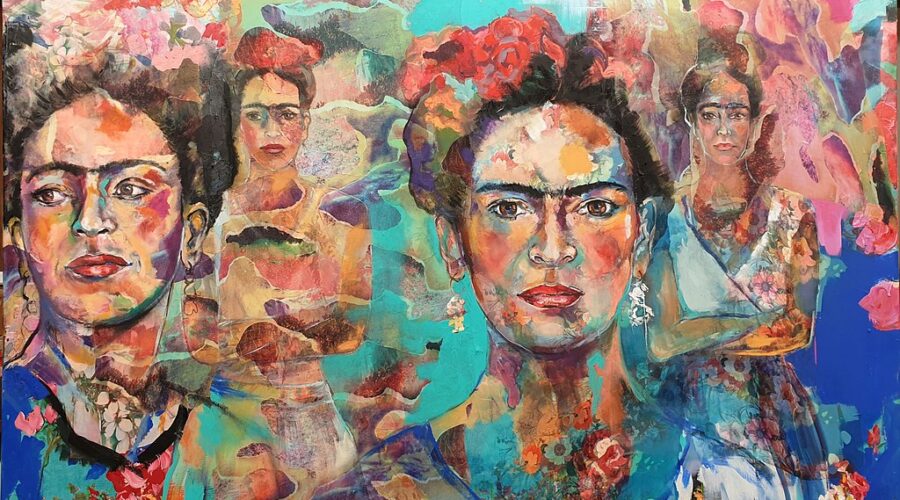Has the creative process died or has it evolved in favor of other techniques? This is the debate that has been generated in recent days in the art world, after a work made by an artificial intelligence won first prize in a contest at the Colorado State Fair. The controversy is also linked to intellectual property: Does the work belong to the AI or to the human who received the prize?
Beyond the creation with artificial intelligence and the use that humans give to these new tools and their subsequent commercialization, it is still unknown what path it will take. However, those who always want to be trendsetters, innovators and earn big money may want to go further than perhaps they should.
At the end of September, a collector burned a piece by Frida Kahlo (Fantasmones siniestros) in order to sell it as a limited number of NFTs. Although according to the private collector, Martin Morabak, part of the profits would be donated to art venues, Mexico’s Fine Arts Institute denied the donation in a statement. In addition, the Institute warned they have not given permission for the reproduction of the NFTs, because Kahlo’s work is considered an artistic monument.
They are investigating whether the original piece was actually burned or whether it was a reproduction, although the proof no longer exists. In any case, it could be a crime, according to experts in the field: The law was broken by burning the original; if he lied in order to sell it, that could be fraud; and if it was a reproduction, it could be copyright infringement.
“In Mexico, the deliberate destruction of an artistic monument constitutes a crime,” said the press release from the Mexican Fine Arts Institute. The Frida Kahlo Museum also stated that as the owner of the rights to Kahlo’s works, they have not given permission for the creation of a NFT, and described the act as “destruction of the cultural heritage of our country.”
Meanwhile, Morabak has defended his actions. He said he was doing a good thing for the world by letting everyone see the piece and not just have it as part of a private collection. However, he estimated selling 10,000 NFTs, each worth about $4,000. Although the initiative means in theory that more people will have access, not everyone will; the NFTs are limited so that they have a value.
Although the vision was to create a community of art lovers, not everyone is happy with this type of initiative. In fact, by November 2022, only four NFTs had been sold,. Remember the painting was valued at $10 million — and is now probably ashes.
This way of giving NFTs credibility is upsetting many collectors and artists. Burning art for visibility seems to push it to an extreme where many feel it does not respect the art at all.
This act creates a precedent; will other collectors do the same in the future? Will this really revolutionize the art world?
Although it is not yet known what the path will be as the world continues to change and enter the Metaverse, it seems to be a trend that is slowly escalating. In 2021 the BurntBanksy collective also burned a work by street artist Banksy to turn it into a NFT, the same artist who had already destroyed one of his own pieces a few years earlier.
Some artists are driven by these kinds of shock tactics to draw attention to their work. In October 2022, Damien Hirst sold several of his pieces as NFTs after burning them in a live video. In the past the artist gave buyers of his pieces a choice between a physical work or NFT—4,851 chose NFT and 5,149 buyers opted for the original artwork.
As the world changes, artists can choose to adapt or stay on the same tracks. This will depend largely on their beliefs and motivations. After all, in addition to making art, they must also make sales.
For collectors, there are still doubts about the variability and vulnerability of prices, considering that they do not have a tangible form and are sold in large but limited quantities.
As with all beginnings, we have to wait and see what these movements will bring. Many who have the opportunity to invest prefer to take a risk, knowing that the profits could be greater later on.
So, it is very likely that more platforms, spaces and people interested in digital art will emerge every day. Meanwhile, many collectors have not turned their backs on the NFT, even the most traditional ones are already participating or thinking about it. However, not everyone responds in the same way, for some the respect for art and artistic value is paramount.
Image: Kabinaka

